Ficus Trees in Containers
tapla (mid-Michigan, USDA z5b-6a)
13 years ago
Featured Answer
Sort by:Oldest
Comments (169)
tapla (mid-Michigan, USDA z5b-6a)
12 years agolast modified: 9 years agoandersons21
12 years agolast modified: 9 years agoRelated Discussions
Update on Fainting Ficus Tree
Comments (1)Bare-root them and send them to me - I'll build a bonsai tree out of them. ;o) The windowless garage is a probable death sentence. When you posted before, I suggested the probability of a soggy soil, but you were pretty adamant that the problems didn't originate there. I only mentioned that because a repot back then would likely have cured the problem. It still might, but the recovery for the plant at this time of year is fraught with quite a bit more uncertainty than it would have been then. I'm not sure how often (if at all) freezing temps come calling in your neighborhood, but the top of the tree (above the roots) won't tolerate freezing temperatures, so let that be your guide as to whether you should go through the effort of placing the trees in the landscape. You could always cut the trees back hard to a single branch & wait for them to back-bud. Later, you can prune as required to complete the makeover. This is only a viable option if the trees were growing with good vitality. This would make them considerably less unwieldy, and perhaps allow you to over-winter indoors? If your very interested in saving them, you could also just go for the root and top reduction, which would allow you to put them in a much smaller container. Recovery would be slow, but you would end up with trees that have character and that you've nursed through hard times, a thought many would take satisfaction from. Good luck, no matter what you decide. ;o) Al...See MoreFicus Trees in Containers IV
Comments (329)The first bend in the trunk is result of a previous pruning. I noticed that when I was looking at the first images. Looks like the trunk bifurcated (split to form a 'Y') at that point and one side of the bifurcation was pruned off. In mid-June, the lowest branch marked in yellow should be cut back to 4 leaves. The long branch moving left/ marked yellow in the image above, and the branch moving right/ marked yellow should also be pruned back to 2 leaves. The leader, above these 2 branches and marked in yellow, should be pruned back to a leaf that points in the direction you want the leader to grow. This is called 'directional pruning'. Example: With the above pruning cut made, the new branch (shows as a leaf only, but it's a new branch) in the axil of the leaf on the right will want to grow to the right. If you wanted the new leader to move left, you would prune lower, to just above the leaf on the left. A cut above the leaf attached to the severed part would give rise to a branch growing away from the grower. Because there are other forces in play, like phototropism (tendency for plants to bend toward the brightest light source), there is no guarantee the branch will grow where you wish, so you might need to encourage the new branch that forms in the axil of the leader's top leaf to grow where YOU want it to. I mentioned this already, but I'll reiterate that your tree will respond to pruning with a much higher degree of enthusiasm if you do the pruning A) while the tree's energy reserves are highest, and B) when the tree's current ability to carry on photosynthesis is peaking, both of which will occur during the summer solstice (21 June). 'Father's Day' is easy to remember. If you intend to repot, do it at the same time you prune. While you could probably remove a little soil to cut through (2 cuts) the kinked root that emerges from and returns too the soil, I would do it at the same time you prune the top. Reason: Pruning the top decreases the volume of foliage the roots must work to keep hydrated. It also makes it less likely that a branch on the same side of the tree where the kinked root is attached will die. When a tree is unable to keep certain parts hydrated, it sheds those parts. Unfortunately, they seem to always choose to shed parts the grower feels are essential to the o/a composition/ shape/ style of the tree. Some trees, like junipers/ yews/ arborvitae/ .... , develop a dedicated relationship between individual roots and branches, such that damage to a particular root will kill a particular branch. Notice the live veins connecting roots to individual branches below: This tree ^^^ has 4 branches and 4 live veins. Other trees lack the direct relationship between particular roots and branches. For the genus Ficus, the relation is moderate, but the lower a branch is (and the shorter the tree is) the greater the likelihood that death of a branch or root will result in the dieback of it's counterpart on the opposite side of the root to shoot connection. When serious about earning a green thumb, the largest step a container gardener can take in that direction will come from understanding how water behaves in container media and what that means to the health of your plants' root systems; this, because issues with root function and/or health cause the most problems by far, with some of them seemingly unrelated to root health. Two examples that lend support to the later contention are infections by disease pathogens and insect predation due to a less than robust metabolic rate, caused by limited root function or poor root health. A healthy plant will remain forever elusive unless and until we are able to maintain root systems in an elevated state of vitality (health). Al...See MoreWhy is my ficus tree dying?
Comments (37)Your tree is in steep decline because it's being asked to tolerate cultural conditions at or beyond what it's genetically programmed to tolerate. I'm guessing it's probably been potted up to a larger size pot several times, but never truly been repotted, which includes root pruning and a complete change of soil. If that's the case, root congestion would undoubtedly be severely limiting, as the limitations associated with it begin at about the time the root/soil mass can be lifted from the pot intact. It's possible that, by this time, there is calcified soil in the center of the root mass that might be so hardened a chisel would be required to remove it - no way to tell until you get a look at the roots. Other potential issues that would be much closer to expected than suspected, would be a soil with a badly skewed ratio of nutrients in it, and a high level of dissolved solids (salts) in the soil/soil solution. The badly compacted center of the root/soil mass is probably limiting the ability of both plant and soil to absorb water, and limiting the root system's oxygen supply, which is a key factor in making available the energy that drives root function. There's little doubt that it can be saved, but it'll be a chore, and something I'd probably start planning to do in June ..... if you live in the northern hemisphere. Lots more to talk about, but I'll wait to hear what you have to say. Al...See MoreFicus (?) Tree Losing Leaves
Comments (10)Yes, unless you're in far south Florida or Texas, you'll want to wait until spring to do a full repot. That point will also be a good time to prune the growing tips to induce back-budding (where the leaves fill in the inner portions of the branch). There are many great posts on how to do this. I think Al's (Tapla's) Ficus Trees in Containers Part IV is the most extensive. As for the leaves curling downward, that's a thing ficuses do when they're trying to shed excess water. You're probably overwatering, most people do at first. Forget watering by the calendar and go by what the plant actually needs: get some bamboo BBQ skewers & use them as dowels to measure how dry the tree is. Insert one into the pot as far as it will go, and don't water until the stick comes out dry all the way down. You'll want to get the tree into a better draining mix in the spring, but it's really late in the year for that, excepting subtropical areas, and it should be okay until then....See Moretapla (mid-Michigan, USDA z5b-6a)
12 years agolast modified: 9 years agoGinnySue
12 years agolast modified: 9 years agotapla (mid-Michigan, USDA z5b-6a)
12 years agolast modified: 9 years agoSmurfishy
12 years agolast modified: 9 years agorina_Ontario,Canada 5a
12 years agolast modified: 9 years agoSmurfishy
12 years agolast modified: 9 years agorina_Ontario,Canada 5a
12 years agolast modified: 9 years agojulia_c
12 years agolast modified: 9 years agotapla (mid-Michigan, USDA z5b-6a)
12 years agolast modified: 9 years agojulia_c
12 years agolast modified: 9 years agotapla (mid-Michigan, USDA z5b-6a)
12 years agolast modified: 9 years agojulia_c
12 years agolast modified: 9 years agotapla (mid-Michigan, USDA z5b-6a)
12 years agolast modified: 9 years agojulia_c
11 years agolast modified: 9 years agotapla (mid-Michigan, USDA z5b-6a)
11 years agolast modified: 9 years agoanne_g
11 years agolast modified: 9 years agotapla (mid-Michigan, USDA z5b-6a)
11 years agolast modified: 9 years agoanne_g
11 years agolast modified: 9 years agotapla (mid-Michigan, USDA z5b-6a)
11 years agolast modified: 9 years agojulia_c
11 years agolast modified: 9 years agotapla (mid-Michigan, USDA z5b-6a)
11 years agolast modified: 9 years agogravyboots
11 years agolast modified: 9 years agotapla (mid-Michigan, USDA z5b-6a)
11 years agolast modified: 9 years agogravyboots
11 years agolast modified: 9 years agotapla (mid-Michigan, USDA z5b-6a)
11 years agolast modified: 9 years agotapla (mid-Michigan, USDA z5b-6a)
11 years agolast modified: 9 years agotapla (mid-Michigan, USDA z5b-6a)
11 years agolast modified: 9 years agoTiffany, purpleinopp Z8b Opp, AL
11 years agopimpette95
10 years agolast modified: 9 years agoLisa Susin
7 years agolast modified: 7 years agoDave
7 years agotapla (mid-Michigan, USDA z5b-6a)
7 years agolast modified: 7 years agoLisa Susin
7 years agotapla (mid-Michigan, USDA z5b-6a)
7 years agoShawnee Penner
7 years agoDave
7 years agolast modified: 7 years agoHumphrey Walker
6 years agoIttai Baratz
4 years agoSophie Phillips
4 years agotapla (mid-Michigan, USDA z5b-6a)
4 years agoSalle Bayer-Carney
2 years agotapla (mid-Michigan, USDA z5b-6a)
2 years agoSalle Bayer-Carney
2 years agotapla (mid-Michigan, USDA z5b-6a)
2 years agolast modified: 2 years agoSalle Bayer-Carney
2 years agoSalle Bayer-Carney
2 years agotapla (mid-Michigan, USDA z5b-6a)
2 years agoHU-984723909
3 months ago
Related Stories

HOUZZ TOURSHouzz Tour: Eclectic Chilean Home Embraces Trees
Ficus trees star in the interior courtyard of this Santiago house, which celebrates its design history, quirks and mix of styles
Full Story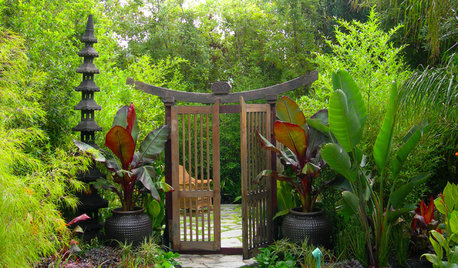
CONTAINER GARDENS10 Ways to Take Containers Beyond the Patio
Enliven your landscape with pots and containers
Full Story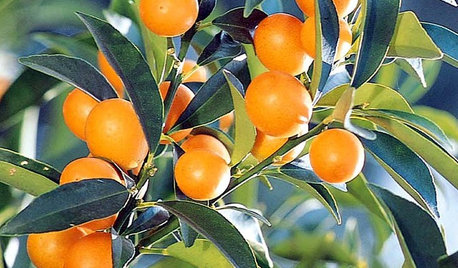
FALL GARDENING5 Fall Fruits You Can Grow in Containers
Brighten your porch or patio with a potted pomegranate, kumquat, blueberry bush or another great fall fruit
Full Story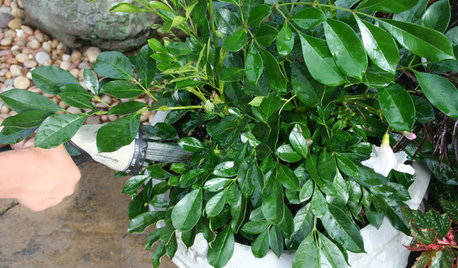
CONTAINER GARDENSContainer Garden Basics: How and When to Water Potted Plants
Confused about soil moisture, the best time to water and what watering device to use? This guide can help
Full Story
HOUSEPLANTSSee How Fiddleleaf Fig Trees Can Liven Up Your Decor
The tropical houseplant with big green leaves adds a cheerful and striking design element to rooms
Full Story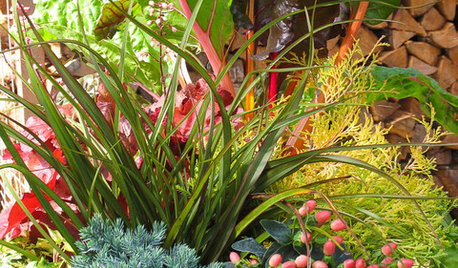
PLANTING IDEASStretch the Budget, Seasons and Style: Add Conifers to Your Containers
Small, low-maintenance conifers are a boon for mixed containers — and you can transplant them to your garden when they’ve outgrown the pot
Full Story
TREESHow to Use Trees Inside
Bring nature close by integrating the beauty of trunks and trees — even smaller leafy trees — into your home
Full Story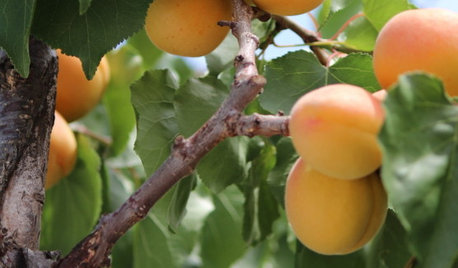
FARM YOUR YARDIf You Have Room for Only One Fruit Tree ...
Juice up a small garden with one of these easier-care or worth-the-effort fruit trees for a mild climate
Full Story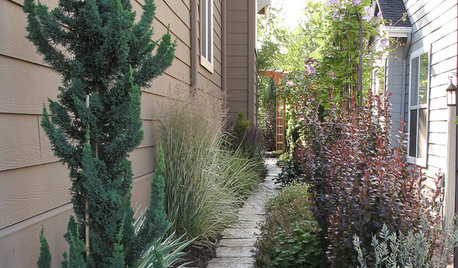
SIDE YARD IDEASNarrow Trees for Tight Garden Spaces
Boost interest in a side yard or another space-challenged area with the fragrance and color of these columnar trees
Full Story
HOLIDAYSHouzz Call: Show Us Your Christmas Tree!
How lovely are your branches? Post a picture and share your stories
Full Story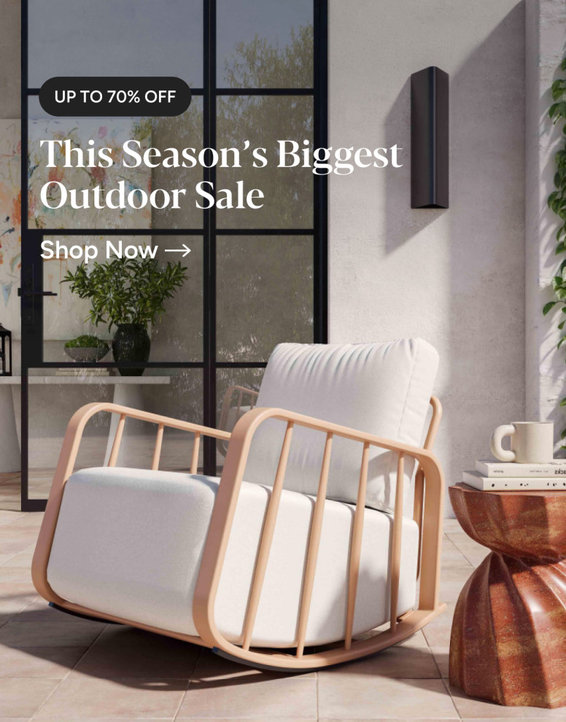









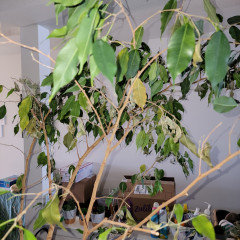


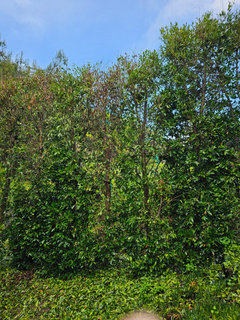
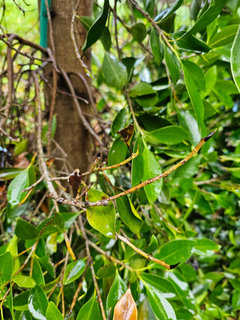



tapla (mid-Michigan, USDA z5b-6a)Original Author